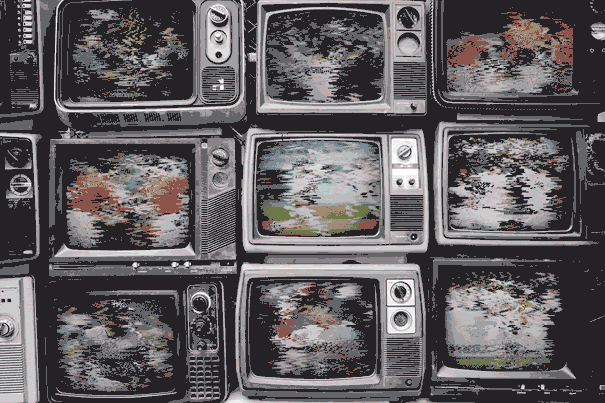Laying Cable on the Line Pros and Cons of the Service Everyone Loves to Hate
One recent morning on KABC’s radio talk show “Ken and Barkley Company,” Roger Barkley shared his favorite cable horror story. It seems that a few years back--”two or three owners ago,” he clarified--Barkley attempted the impossible: He tried to call his Pasadena cable company.
“I just couldn’t get through,” he recalled. Tired of hearing a busy signal, Barkley finally decided to speak to someone at the company in person.
“I walked in, and there was the phone sitting on the front desk, and all the lines were on hold,” he said. And the receptionist sat by the phone, not answering any of them.
In a way, Barkley couldn’t blame her--that receptionist probably took a lot of abuse, judging from the number of listeners who lit up Ken and Barkley’s phones complaining about their own cable companies.
Cable woes--busy phones, unresponsive service, poor reception--are nothing new. But a just-released government survey of 1,500 cable systems nationwide has given new ammunition to cable bashers. The survey found that during the four years since the Reagan Administration deregulated cable--thereby enabling most cable operators to set their own prices--the cost of the most popular basic cable services rose by 61% (the survey didn’t include the cost of premium channels such as HBO). Even after being adjusted for inflation, the figure is still twice as high as the overall price increase for consumer goods.
The survey has fueled watchdog groups and legislators pushing for re-regulation. And while the cable industry has criticized the survey’s methodology and offered reasons why prices have gone up, that may not stop some subscribers from wondering whether cable is worth the money--and the hassle.
“I’ve gotten hundreds of complaints from all over the state,” said pro-regulation lobbyist Sylvia M. Siegel, head of Consumer Cable Cop, a fledgling nonprofit watchdog organization. “People are enormously aggravated by the rate increases; they’re upset at customer services and the dreadful late fees.”
In urban areas such as Los Angeles, where noncable users have access to a variety of over-the-air channels, cable’s selling point is its variety of programming--from movie channels such as Showtime to specialty channels such as Discovery, ESPN and the Arts & Entertainment Network. But a number of consumers would rather give up variety than deal with their cable operators.
Joe Varga, an engineer from Canoga Park, is one of cable TV’s disenchanted. “I had cable when it got to my area five years ago,” he said. “I had it for about a year or so, and I found that cable doesn’t seem to offer anything I can’t get on commercial TV.”
Toluca Lake free-lance writer Richard Adlai has had at least three different cable operators in the past; currently, he just watches broadcast TV because he is dissatisfied with cable’s customer service. “My personal opinion is that they don’t have enough staff for the areas they are covering, and they don’t really have qualified people who are concerned about service. Of course, it all boils down to the fact that they have a monopoly on the product they’re selling.”
“Monopoly” is a frequently muttered word when customers get on the subject of cable operators. With few exceptions, the nation is divided into different-sized franchise areas, each served by a single cable operator.
While these franchises may be exclusive or non-exclusive, most areas only have one cable company because it doesn’t pay to compete and wire an area that’s already being served by someone else.
Cable has been around since the 1940s, but the franchising boom began in earnest in the early 1980s. In cities within L.A. County, cable companies interested in serving a municipality would bid for the rights. The chosen operator was given a franchise agreement to wire the area, with the average contract about 15 years, said John Mansell, a senior analyst at the independent research firm Paul Kagan & Associates.
Such a system has its share of quirks: Oddly drawn boundaries can have one side of a street controlled by one cable system while the opposite side is controlled by another; tiny pockets within one cable operator’s territory may be serviced by a different company. If it sounds confusing, it is--even to those in the cable industry.
Those less involved can find themselves completely in the dark when it comes to dealing with their cable operators. Short of moving to another franchise district, dissatisfied customers often feel they have no recourse.
But persistence in tracking down the right organization to complain can pay off. In 1989, for example, hundreds of angry subscribers to Century Cable, which serves a large chunk of Los Angeles, including much of the Westside and parts of the San Fernando Valley, as well as Eagle Rock and Highland Park, attended a public hearing by the Los Angeles Board of Telecommunications Commissioners.
After listening to complaints ranging from repairmen who never show up to bad reception to those endlessly ringing phones, the board demanded specific improvements in Century’s systems.
The result of this public pressure (and the fear of possible franchise revocation): a $40-million technical overhaul of the system and a renewed commitment to customer service, said Bill Rosendahl, vice president of operations at Century Southwest Cable Television.
“We put in a new phone system, hired 40 more customer service reps, and now have 24-hour service,” Rosendahl said. “I’m proud of that.”
Los Angeles’ Department of Telecommunications, which oversees the city’s 14 cable franchises, reports that complaints and inquiries about Century are down from 1,279 for all of 1989 to 416 for the first six months of 1991.
While some consumers continue to grumble about cable, there is another side to the debate: Those who are happy with cable’s programming and service.
Mary Beth Voyles, who manages a mobile home park in Costa Mesa, said the shows on cable are better than those on broadcast television. “Especially in the summer, cable is nice because regular TV is all repeats,” she said. “I also love it because they show all the older things, like ‘Gunsmoke’ and ‘Moonlighting’ and other shows that were so good.”
Others see cable as a link to the outside world. “I doubt if we could even get TV without cable,” said Jay C. Wood, a salesman-entrepreneur in Fillmore, who strongly opposes government regulation. “I’m well-satisfied with my cable company. The transmission quality is good, I get a good picture, I get good sound.”
The cable companies themselves--as well as media-watchers--insist that service and quality continue to get better, and argue that cable television has become a universal scapegoat and an easy issue to be exploited by politicians.
“It’s become the cool thing to criticize your cable company,” said Paul Kagan’s Mansell. “I think cable operators are making dramatic customer service improvements.”
Kathie Delcos, administrative director of the Southern California Cable Assn., agreed. “Cable grew too fast--it was as if it went from being an infant to a teen-ager in a month. Wnen you have major growth, you don’t have the luxury of addressing problems.”
There are concrete indications that the cable industry may be taking customer service more seriously. In February, 1990, the Washington-based National Cable Television Assn. established stringent customer-service guidelines for cable operators. While the guidelines are voluntary, the NCTA said 85% of cable systems that responded to a recent survey have implemented them.
About accusations that cable companies have a monopoly on service, some companies argue that cable, especially in Los Angeles, faces plenty of competition--from VCRs, broadcast channels and other forms of entertainment. Add to that fledgling technological advancements such as fiber-optics and personal satellite dishes that may someday compete with cable systems on a large scale.
But Consumer Cable Cop’s Siegel said that technology will take time. “In the meantime,” she said, dissatisfied cable subscribers “ought to be writing letters to Sen. (John) Seymour, to Sen. (Alan) Cranston, and to their congressmen. They’ve got to let them know that they’re tired of taking it and they’re not going to take it anymore.”
More to Read
The biggest entertainment stories
Get our big stories about Hollywood, film, television, music, arts, culture and more right in your inbox as soon as they publish.
You may occasionally receive promotional content from the Los Angeles Times.









